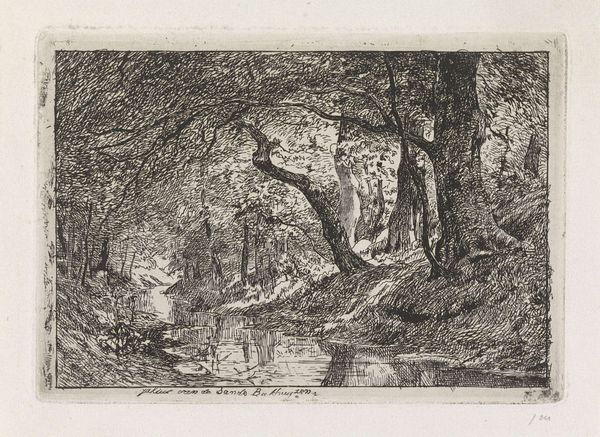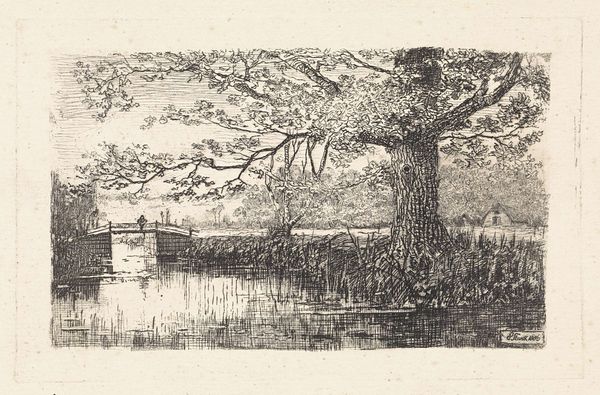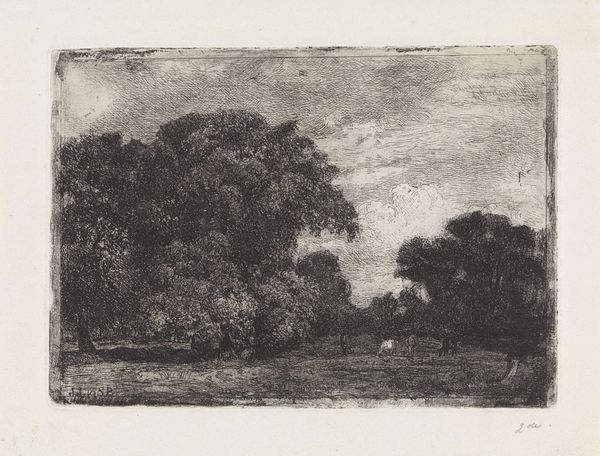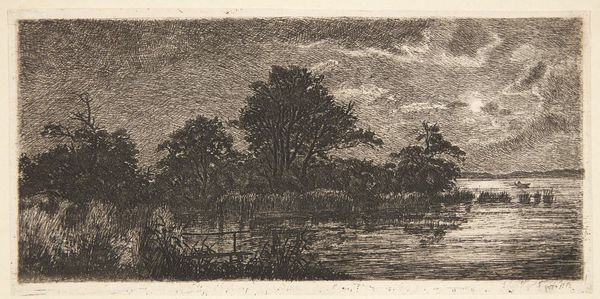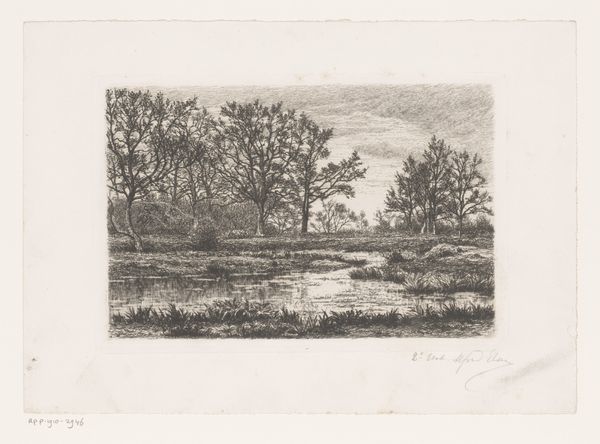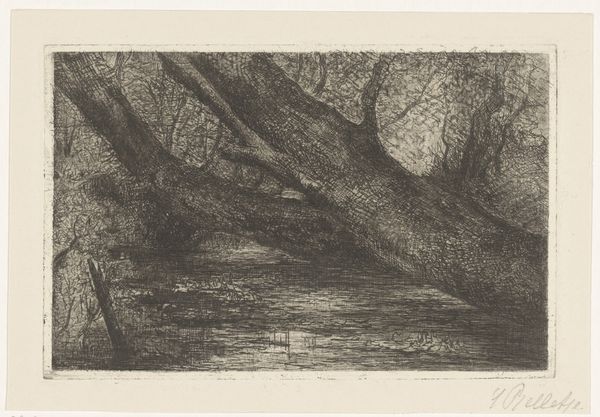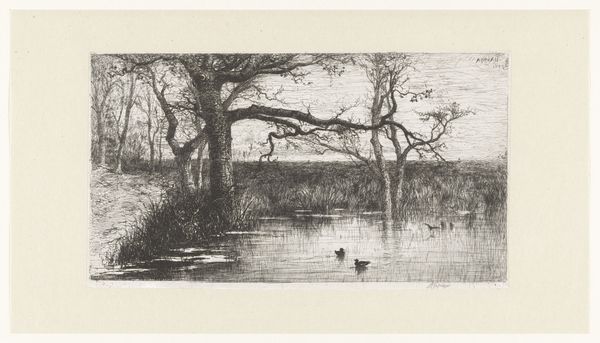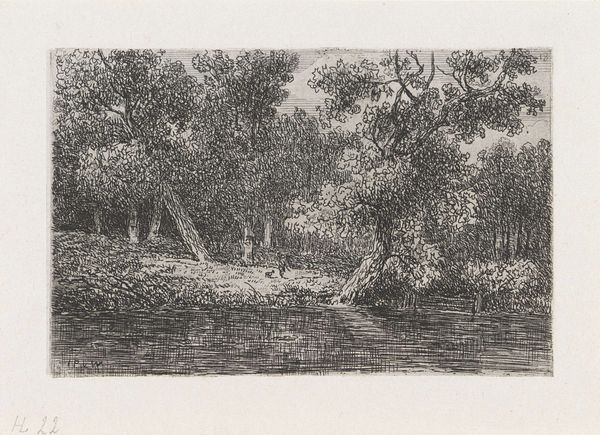
print, etching
# print
#
etching
#
landscape
#
realism
Dimensions: height 116 mm, width 157 mm
Copyright: Rijks Museum: Open Domain
Curator: Welcome to the Rijksmuseum. Here we have Otto Eerelman's "Landschap met drinkende dieren," or "Landscape with Drinking Animals," created between 1849 and 1892, rendered through etching. Editor: It feels like peering into a memory, a half-faded snapshot of rural peace. The scratchy lines create this hushed atmosphere around the animals. Curator: Exactly, and consider the technique, etching—the artist would have meticulously drawn into a wax-covered metal plate. The incised lines then hold the acid, biting away at the metal to create the image. Labor-intensive and precise. Editor: Knowing the process almost makes it feel even more dreamlike, that kind of dedicated hand-craft. And these materials… a landscape captured on a piece of metal with acid! It seems so contradictory. The reflections in the water… almost magical, though achieved through purely mechanical means. Curator: Precisely! Etching allowed for the production of multiples, disseminating images and, by extension, particular visions of the landscape to a wider public, shaped the perceptions and desires. Consider the emerging urban classes… longing for this idyllic pastoral imagery… driving the consumption of prints like these. Editor: And it is such a humble format. No grandiose statements here, but something quietly powerful in its modesty. What does it tell us that even the smallest things need to drink? Curator: Absolutely. In the burgeoning industrial era, works like these idealized nature, softening the stark realities of urbanization, of capitalist extraction. The simple act of drinking… a reminder of nature’s essential offerings… offered to all. Editor: It also highlights this almost radical intimacy: to be given permission to pause and contemplate these gentle animals drinking under the cover of these gnarly trees, to see how much nature asks of us, or perhaps more rightly said, to see that all of it sustains all of us. It’s easy to forget in the noise and hubbub, no? Curator: It really brings that sense of being connected to the non-human back. Editor: Yes. Perhaps that’s the echo that stays, a soft urging for empathy with everything. Curator: Very insightful. It definitely underscores how the landscapes helped reinforce an almost palpable relationship between people and nature.
Comments
No comments
Be the first to comment and join the conversation on the ultimate creative platform.
